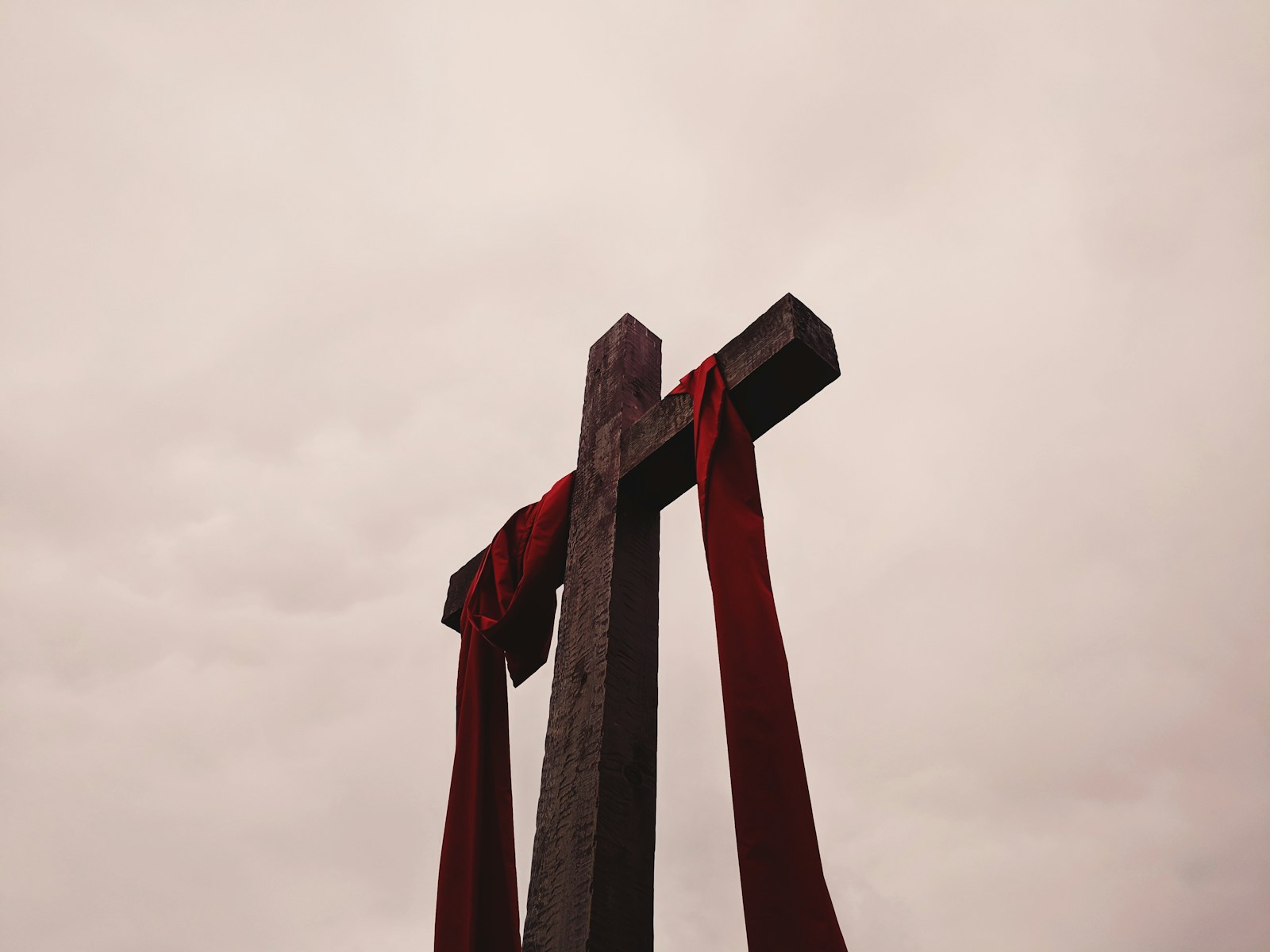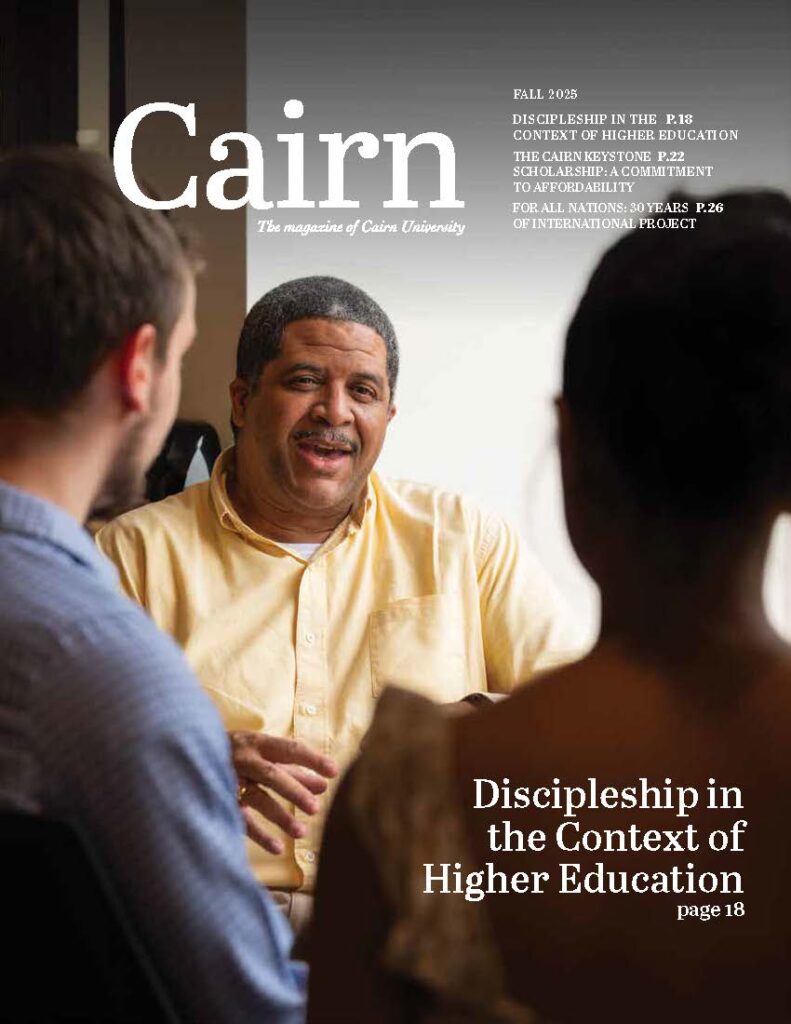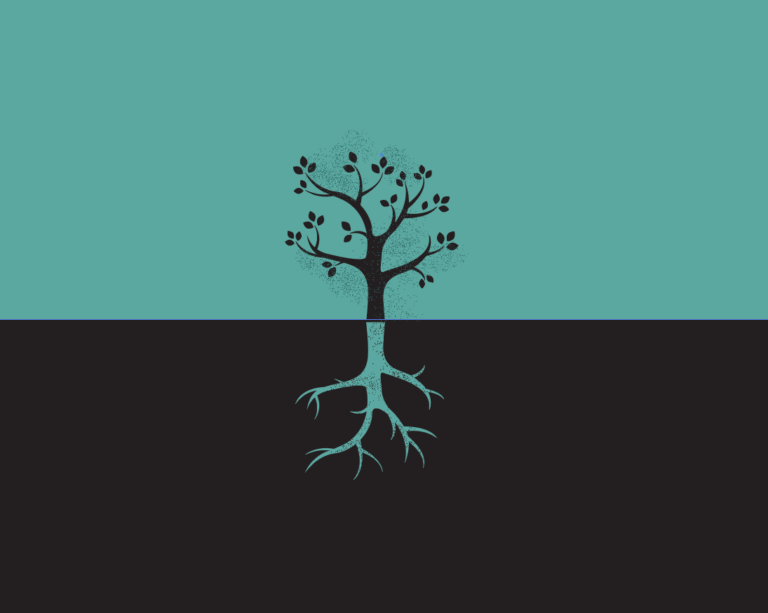As human beings we recognize greatness when we see it. We see a talented athlete like Usain Bolt and recognize that he is the greatest sprinter in the world. There is a greatness in him that everyone can clearly see.
In this article, I want to help you see more clearly the greatness of Christ. His greatness is not always evident because God has hidden it from the world. But he has also revealed it to his saints in Scripture and by his Spirit. So if we are going to see his greatness, we must go to Scripture.
This year at Cairn, we have focused on Colossians 1:15–17, one of the passages of Scripture in which the glory of Christ is most clearly revealed: “He is the image of the invisible God, the firstborn of all creation. For by him all things were created, in heaven and on earth, visible and invisible, whether thrones or dominions or rulers or authorities—all things were created through him and for him. And he is before all things, and in him all things hold together.”
In Colossians, Paul was writing to a church that was in danger of embracing false teaching. We don’t really know what it was, but it was some kind of teaching that said, “Okay, you’ve received Christ but now you need to do these other things or have these other religious or visionary experiences” (see Col. 2:18). But Paul says, “No, you’ve received Christ and you must continue to walk in him!” (see Col. 2:6). In Colossians 1:15–17, then, Paul reminds his readers of the greatness of Christ in order for them to see there is no moving beyond him. We must rather continue in him. For Christ is greater than all things!
In verse 15, we see the fact of his greatness: “He is the image of the invisible God, the firstborn of all creation.” Part of the greatness of mankind is that we are made in the image of God. But when Paul says that Christ is the image of God, he means more than this. He means that the Son of God partakes in the very nature of God. I say this because Paul goes on to say that all things were created by him. To be the Creator of all things is to be God. So Christ is literally as great as anyone can possibly be!
This has been true since the beginning of creation. But Paul’s point seems to be that it’s also true right now. He not only was the image of God—he is the image of God. Even after he took up our flesh, died, and was raised, he is still the image of God. He is both God and man in one person. And so he can represent God to us in a way that no one else can. God is invisible, but in his beloved Son we see a perfect representation of his image.
Paul also says that he is the “firstborn of all creation.” This language can throw us off, because it sounds like Paul is saying that Christ was the first to be created. But, again, Paul goes on to say that all things were created by him. So he is not a part of creation. Rather, he is the firstborn over all creation.
In ancient culture the firstborn son would be given a much larger inheritance, and in a kingdom, only the firstborn son would inherit the throne. So the firstborn was far above his brothers and sisters. In Psalm 89, God says he will make the Messiah “the firstborn, the highest of the kings of the earth” (Ps. 89:27). This is what Paul refers to when he says that God’s Son is the firstborn over all creation. He is greater than all things.
In verse 16, we see the reason for his greatness: “For by him all things were created, in heaven and on earth, visible and invisible, whether thrones or dominions or rulers or authorities—all things were created through him and for him.” The Son of God is the agent by whom God created all things. Paul emphasizes this point by stating it at the beginning and end of the verse and by defining “all things” in terms of the whole spectrum of heaven and earth and the whole spectrum of visible and invisible.
For the Colossians, “invisible” would remind them that Christ is even greater than the threat of invisible, demonic forces: “thrones or dominions or rulers or authorities.” For someone in the ancient world these invisible powers could be a reason to fear and wonder, “Do I need something more than Christ to make it?” For modern people, we tend to think that the visible is all there is. But here, we are instructed that there are also invisible forces in the world. As if we didn’t have enough to be afraid of! Yet Paul says we do not need to be afraid, because God’s Son is greater than all of them. He is their Creator.
Notice also how Christ is so great that he can give meaning and purpose to our lives. The most important questions in life are about our origin and our end. Where did we come from? And what’s it all for? Paul answers that we came from Christ: God created us “through him.” And we were also created “for him,” to follow him and to give him praise and glory. You see, he is so much greater than we are. He wasn’t created for us; we were created through him and for him.
Finally, in verse 17 we see the permanence of his greatness: “And he is before all things, and in him all things hold together.” Sometimes it can seem like everything is breaking apart in the world. Even some of our churches feel like they are breaking apart. But Paul tells us that God holds all things together in Christ. He didn’t just create everything through Christ and walk away. Rather, he is holding all things together in his Son.
You see there is a permanence to his greatness over all things. The world’s greatest athletes eventually grow old and lose their greatness. The Roman
Empire, in all of its greatness, eventually passed away. And we ourselves will soon pass away too. But Christ will never pass away. He has died and risen to eternal life. And he promises to give that life to everyone who repents of their sin and puts their faith in him.
He’s holding all things together, and he will hold all things together. He is permanently great. You can rest all of your faith in him. He will not let you
down. He is great beyond measure. He is greater than all things! As you’ve received Christ the Lord, so walk in him. Continue to get to know him, to love him, to trust him. Because you won’t be disappointed.
This article was originally published in the Spring 2022 issue of Cairn Magazine.










